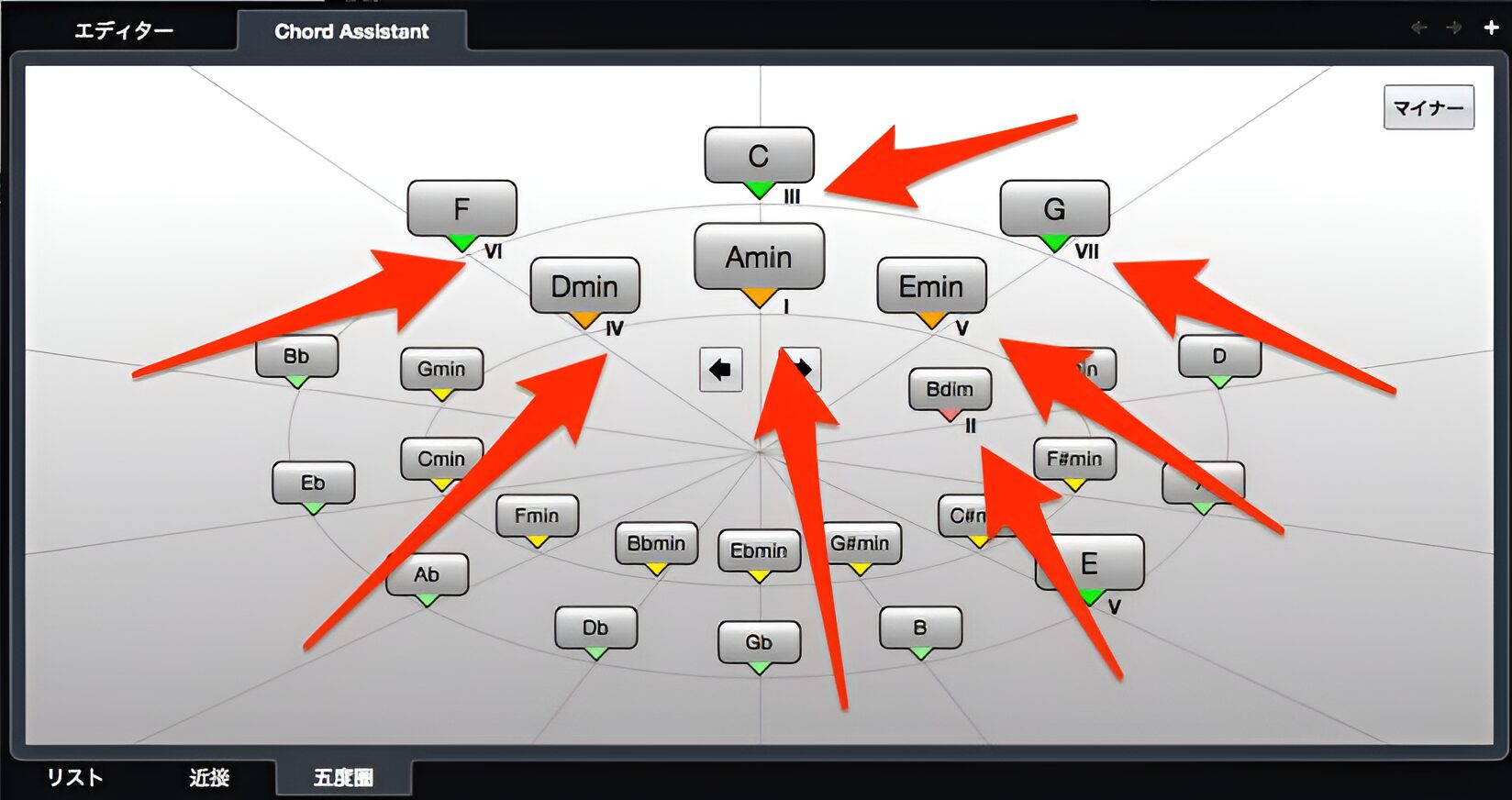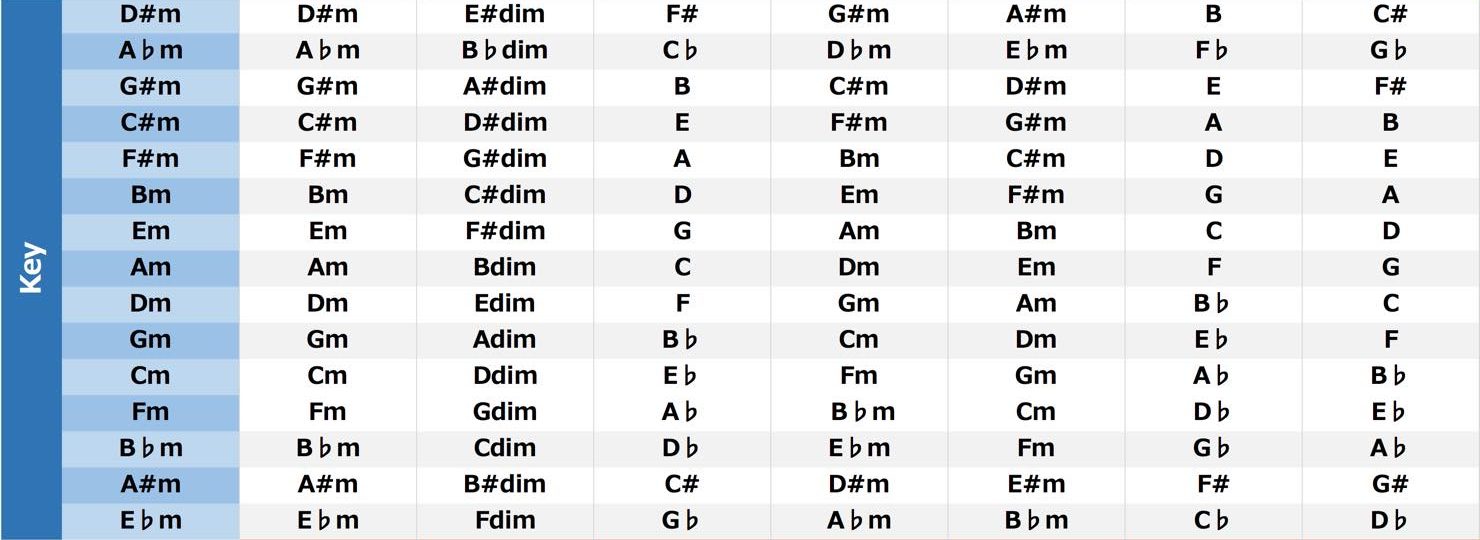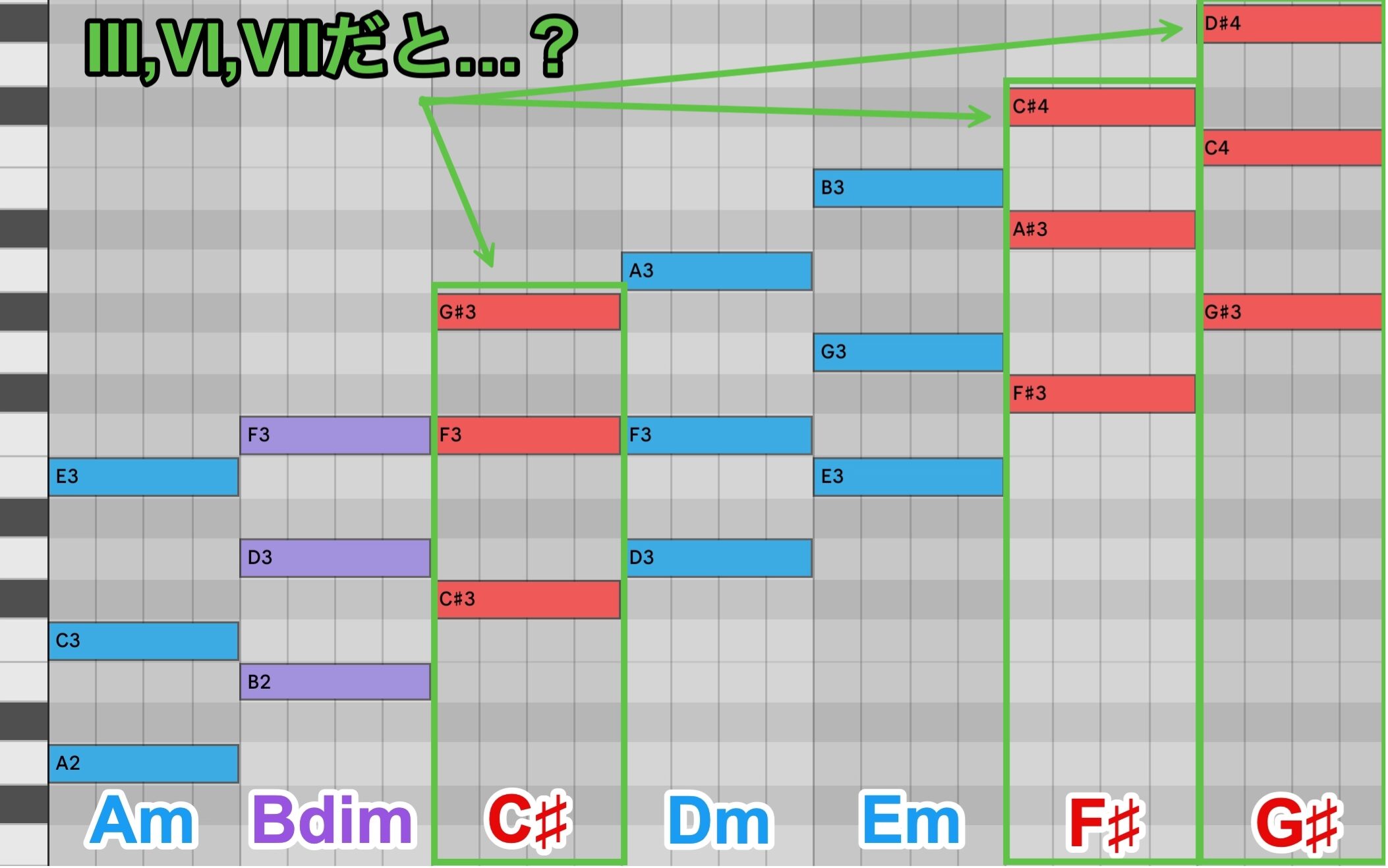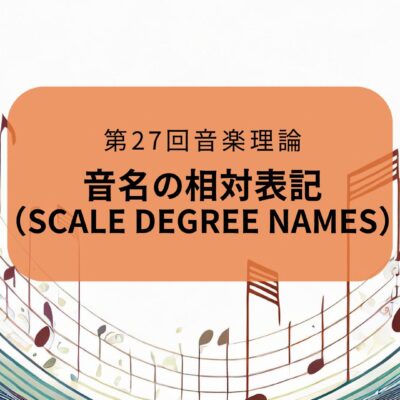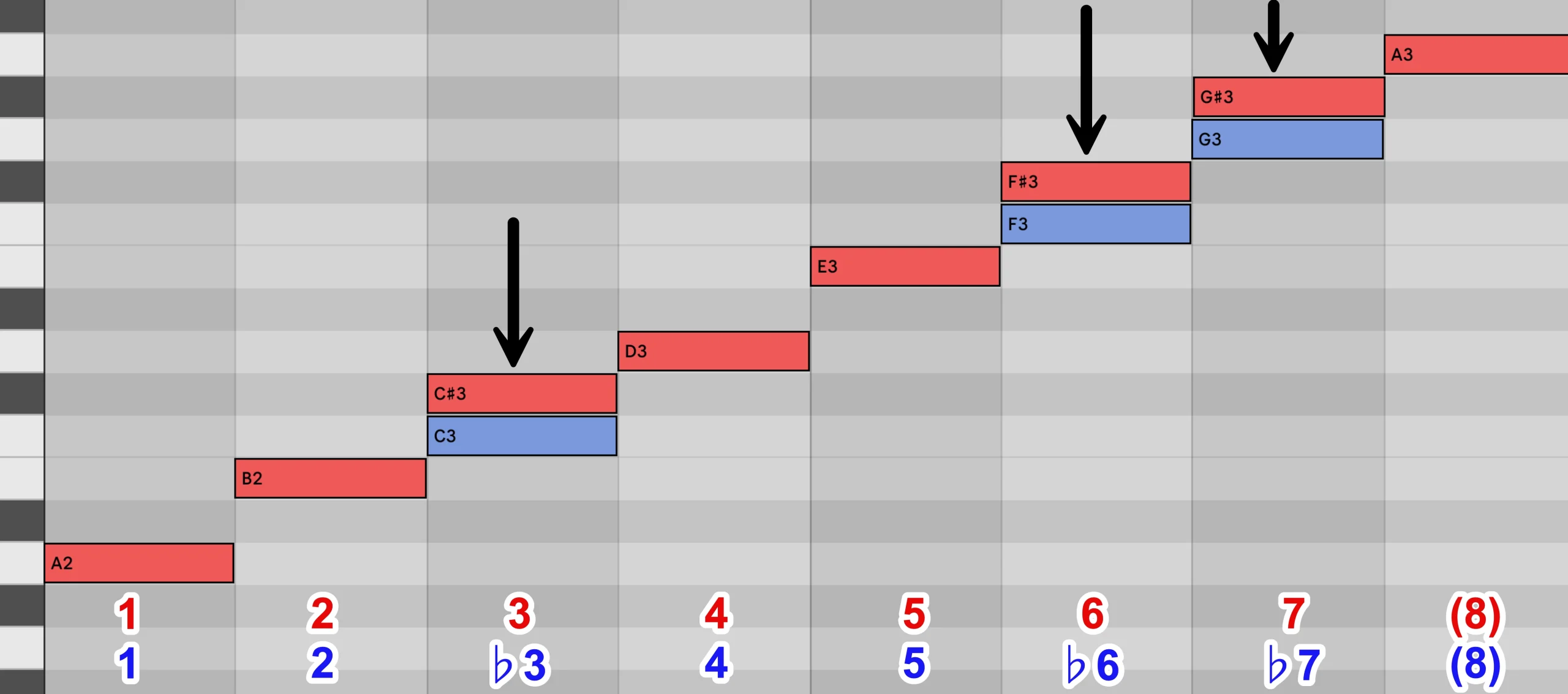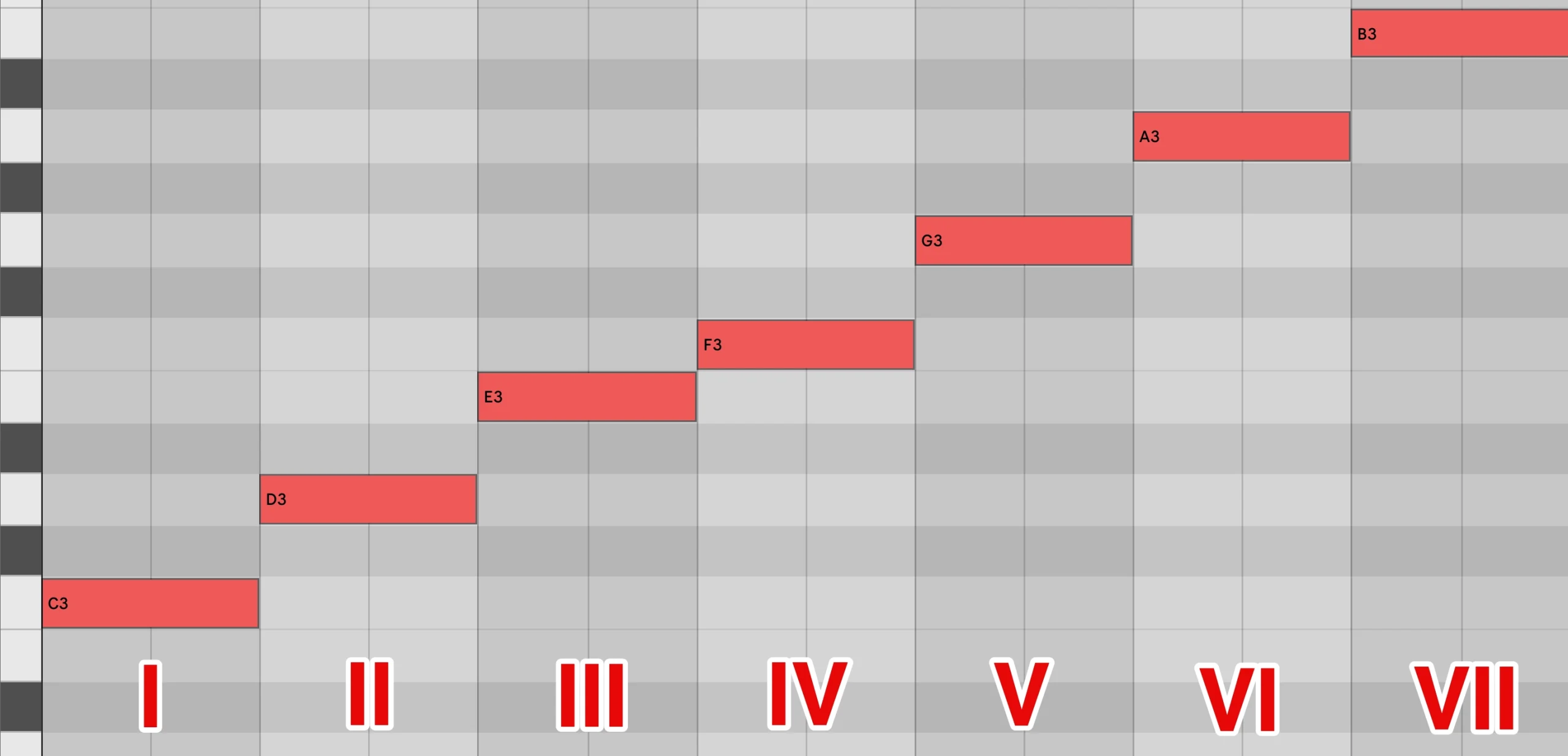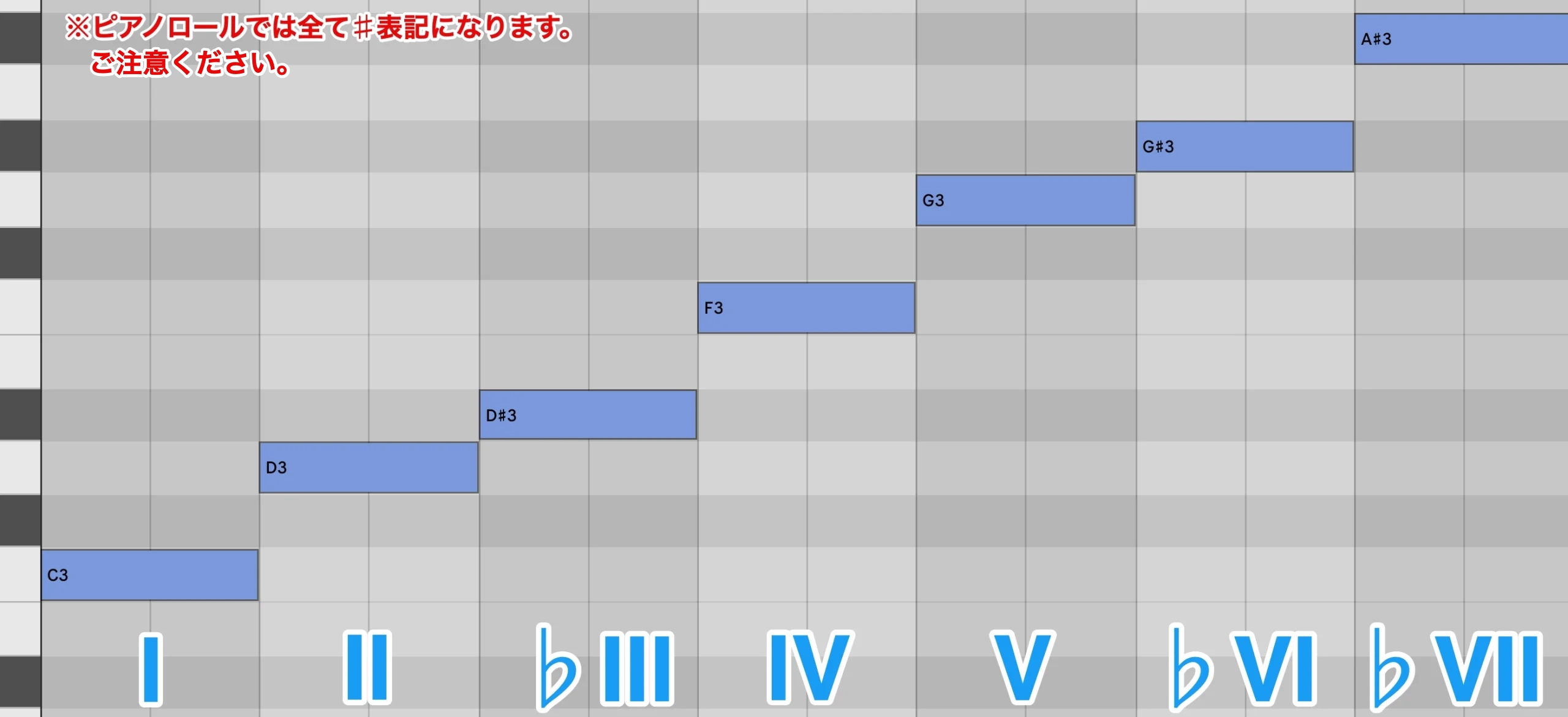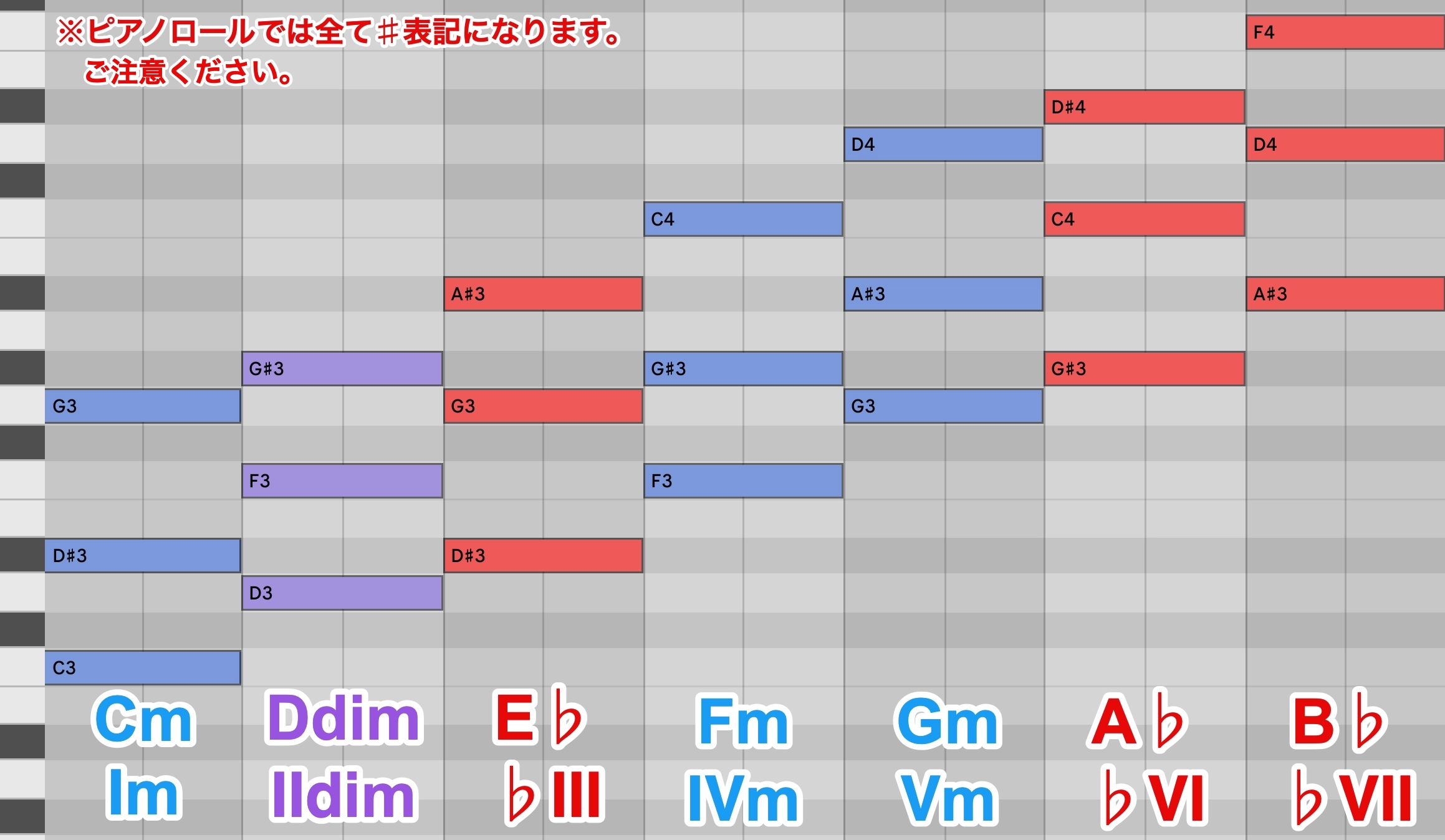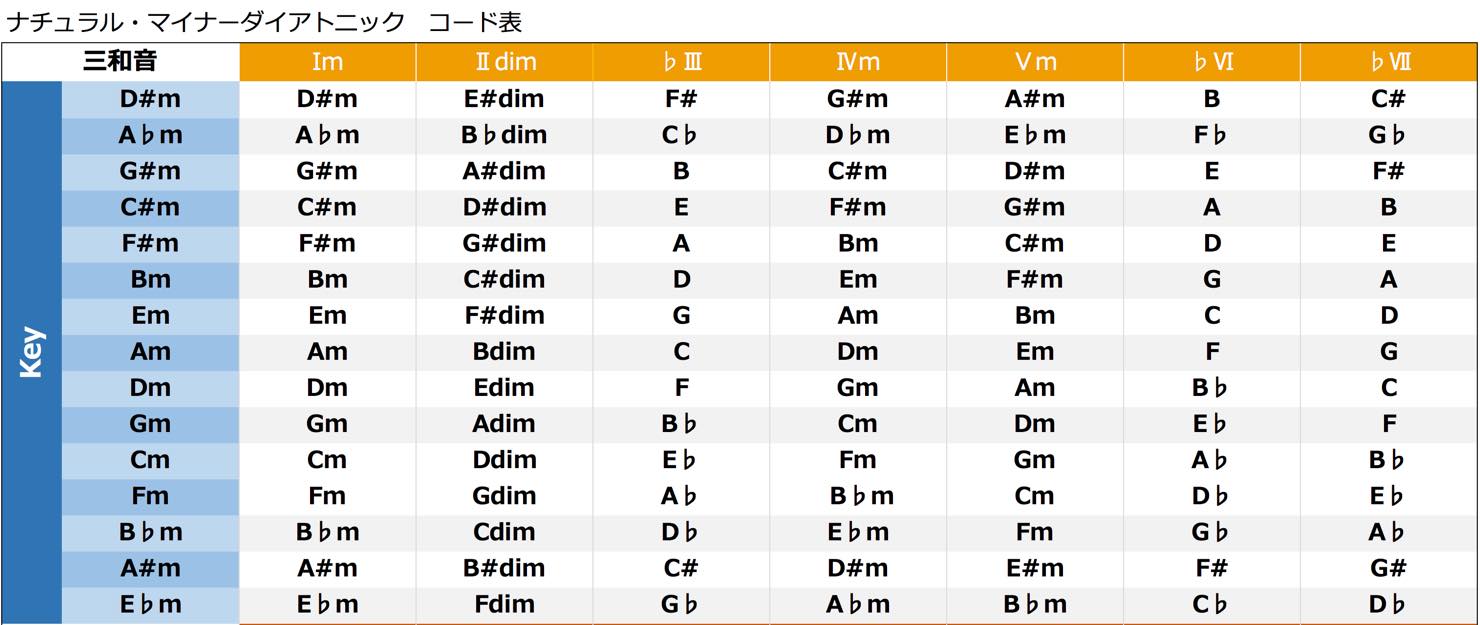ナチュラル・マイナーダイアトニックコードのディグリーネーム(3和音)/音楽理論講座
ナチュラル・マイナーダイアトニックコードの活用に向けて
今回は、メジャーの際の流れと同様に、ナチュラル・マイナーのダイアトニックコードをローマ数字(ディグリーネーム)に置き換える方法を学んでいきましょう。
実は、”非常に間違えやすいポイント”があります。
その点もあわせてお伝えしていきます。
ダイアトニックコードのディグリーネームの置き換えについて未読あるいは忘れてしまった方は、本講座の21~26回あたりを参照し、ディグリーネームに置き換える利点のイメージを固めておきましょう。
解説に使用する表は、下記URLよりダウンロードが可能です。
学習にお役立ていただければ幸いです。
https://sleepfreaks-dtm.com/wordpress/music/Natural_Minor_Diatonic_Triad.zip
ダイアトニックコードの法則性に注目する
ここまで各キーでのナチュラル・マイナーのダイアトニックコード(3和音)の作り方を学んできましたが、あらためて一覧表を見てみましょう。
メジャーと同様に、これらをすべて暗記するのは大変です。
しかし、前回〜前々回で触れたとおり、どんなキーで作り上げても”スケールに沿って左から出来上がるコードの性質は同じ“という点がポイントです。
このように、いずれも
マイナー、ディミニッシュ(三和音)、メジャー、マイナー、マイナー、メジャー、メジャー
の並びになっていることがお分かりいただけると思います。
ナチュラル・マイナーダイアトニックの落とし穴
ここであえてメジャーのときとは異なる順番で進めてみます。
「コードの性質どおり並べれば・・・」ということで、以下のように進めてしまいがちです。
この状態(♭がなかったり)でも表記されているものもありますが、当講座では、他のスケール、ダイアトニックコードとの違いの意識や後々のテクニックのために「♭」をつけて進めていきます。
もし、このローマ数字表記のままでAから始めると、次のようになってしまいます。
なぜでしょうか?
ここで、スケールに数字を振ったときのことを思い出してください。
メジャー・スケールが
- 1 2 3 4 5 6 7 (8)
であるのに対し、ナチュラル・マイナーは
- 1 2 ♭3 4 5 ♭6 ♭7 (8)
でした。
ということは、Aを主音(Tonic)として関係性を考えた場合、上記のとおり3(III)はC#、6(VI)はF#、7(VII)はG#となり、白鍵だけで出来上がっていた、Aナチュラル・マイナースケールではなくなってしまいますね。
わかりにくい場合は、Cを主音(Tonic)として考えてみましょう。
メジャーの際に考えた手順でいきます。
メジャーではこのように、スケールの始まりの音から順番にローマ数字を振っていきました。
Cメジャースケールは
- C D E F G A B (C)
- 1 2 3 4 5 6 7 (8)
Cナチュラル・マイナースケールは
- C D E♭ F G A♭ B♭ (C)
- 1 2 ♭3 4 5 ♭6 ♭7 (8)
となります。
ディグリーネームは以下のとおりです。
ナチュラル・マイナーダイアトニックコードのディグリーネーム(3和音)
ここからダイアトニックコードを作りましょう。
手順は前回〜前々回に掲載したとおりです。
あわせて、ローマ数字の隣に各コードの性質を付記していきます。
ディグリーネームの記述法は、メジャーの横に「△」をつけたり、マイナーは小文字(「ⅲ」等)で示すなど、様々な表記法があります。本講座では上記の記述で統一します。
メジャーと同様に、スケールの音をローマ数字の箇所に当てはめていくだけです。
最初からナチュラル・マイナースケールがわからなくても、メジャースケールが分かれば、その3/6/7を♭させればいいというわけです。
ちなみに、それぞれの呼び名は以下のとおりです。
- Im =ワン・マイナー
- IIdim = トゥー・ディミニッシュ(トライアド)
- ♭III= フラット・スリー・メジャー
- IVm = フォー・マイナー
- V m= ファイブ・マイナー
- ♭VI = フラット・シックス・メジャー
- ♭VII = フラット・セブン・メジャー
最後に、ローマ数字表記ありのナチュラル・マイナーダイアトニックコード(3和音)一覧表を載せておきます。
ぜひ、ご利用ください。
(リンク先を保存で大きいファイルを取得できます。)
・三和音
https://sleepfreaks-dtm.com/wordpress/music/Major_Diatonic_Triad.zip
・四和音
https://sleepfreaks-dtm.com/wordpress/music/Major_Diatonic_Tetrad.zip
次回は、ナチュラル・マイナーダイアトニックコードの4和音のディグリーネームを確認していきましょう。






